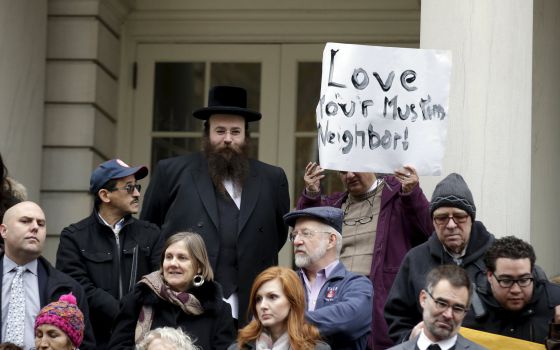
Up until the mid-1900s, the U.S. had laws in place that prevented immigrants from entering the country.
U.S. history cannot be understood without considering the legacy of immigration. It was founded by the first British colonists who arrived on what is now the East Coast of the U.S. at the beginning of the 17th century. Two aspects considered essential to this country are the so-called melting pot [concept] and the idea that any American can prosper if they work hard.
Despite all this, the recent proposal from Republican presidential candidate Donald Trump to ban all Muslims from entering the country is not an unusual one. Past laws also restricted the arrival of immigrants.
Here are the most significant ones:
The Chinese Exclusion Act (1882)
The first restrictive law on immigration was passed in 1882: the Chinese Exclusion Act. It prohibited all Chinese citizens from entering the country and prevented Chinese immigrants already in the U.S. from becoming American citizens. The Act was a consequence of an 1880 treaty that placed tight restrictions on incoming Chinese migrants.
Chinese immigration to the U.S. started around 1850. The immigrants took jobs in the gold mines and later in farming, construction and product manufacture. While the presence of Chinese immigrants grew, so did negative feelings toward them.
The trigger that led to the 1882 Act being adopted was the increase in complaints from U.S. citizens that, while unemployment was growing, Chinese workers on the West Coast were taking all the jobs and lowering salaries.
The Act was initially intended to last for 10 years, but was continuously renewed until 1943 when China became an ally of the U.S. against Japan in World War II and the law was repealed.
Literacy Tests and the ‘Asiatic Barred Zone’ (1917)
Congress approved the Immigration Act in 1917. This required literacy tests from immigrants – mostly affecting poor Catholics, Jews and Asians – and excluded citizens of the so-called “Asiatic Barred Zone” from entering the country. The zone included Central Asian countries and the entire Pacific Coast, with the exception of Japan and the Philippines.
The reason for this was that Japan had voluntarily limited migration to the U.S. in 1907 and that the Philippines was a U.S. colony at that time – meaning Filipinos were not foreigners.
The law was approved in the context of uncertainty after World War I and as a consequence of the growing requests for a tough approach to immigration after the arrival en masse of immigrants from Southern and Eastern Europe between 1899 and 1914.
The law also banned immigrants considered “undesirable” from entering: homosexuals, epileptics, polygamists, anarchists and anyone considered “mentally or physically defective.”
Quota System (1921)
The Immigration Act was reformed just a few years later as the literacy tests were not considered a strict enough filter to guarantee white, Anglo-Saxon hegemony of the U.S. population.
In an attempt to slow the arrival of Eastern Europeans, Congress passed a quota system to limit the entry of immigrants to the U.S. in 1921. Only 3 percent of the total population already resident in the U.S. from any given country, according to the 1910 census, could come in.
In 1924, the most conservative legislators imposed their own point of view and so the system survived. The quota was reduced to two percent for each nationality, according to data from the 1890 census. The change was significant, [especially] given that the 1910 census recorded a higher number of immigrants.
The law also completely excluded Asians from entering the country, thus affecting Japan and the Philippines, as well. Furthermore, it prevented many Europeans from getting U.S. visas in the lead up to the Holocaust.
The law was revised in 1952.

Leave a Reply
You must be logged in to post a comment.